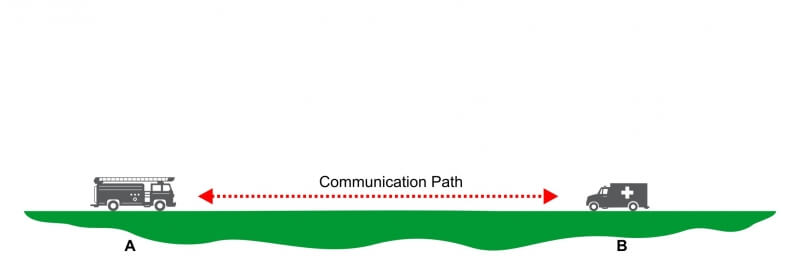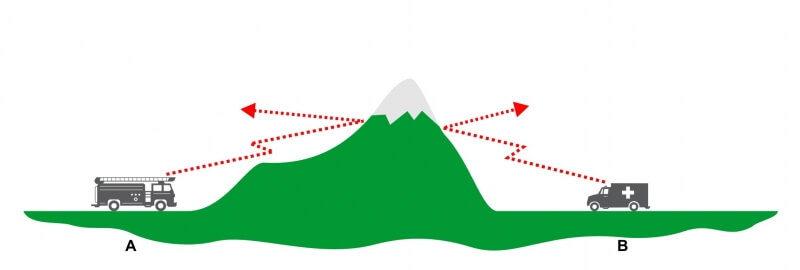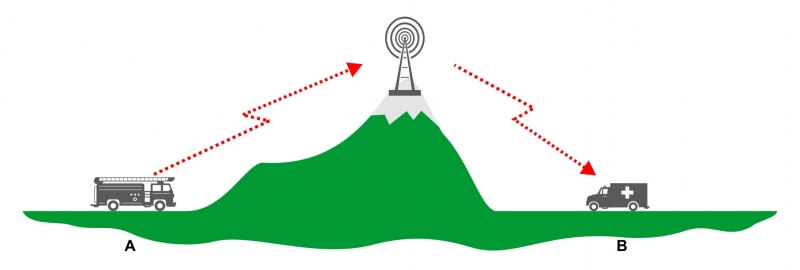How a Repeater Works
Working with a handheld is similar to working with a walkie-talkie. As long as somebody is in a straight line from them, a user can talk to them. This is a radio to radio connection and is called simplex communication.

A walkie-talkie works fine if there is no obstruction between the radio that is calling and the radio that is receiving. But what happens if there is a hill or a big building in the way? Line of sight is no longer possible because something is blocking the radio.

Often in these situations, a radio that can repeat the message is placed on the top of the mountain, called a repeater (or base station). If a user wants to make a call on the handheld radio, the message goes in a straight line up to the repeater.

The repeater needs to receive the frequency that the caller transmitted with, and then the repeater re-transmits that same message down to the user on the other side of the mountain. It works similarly to the satellite discussed with VHF radio propagation, but instead of a satellite, it is a fixed radio on top of the hill.

